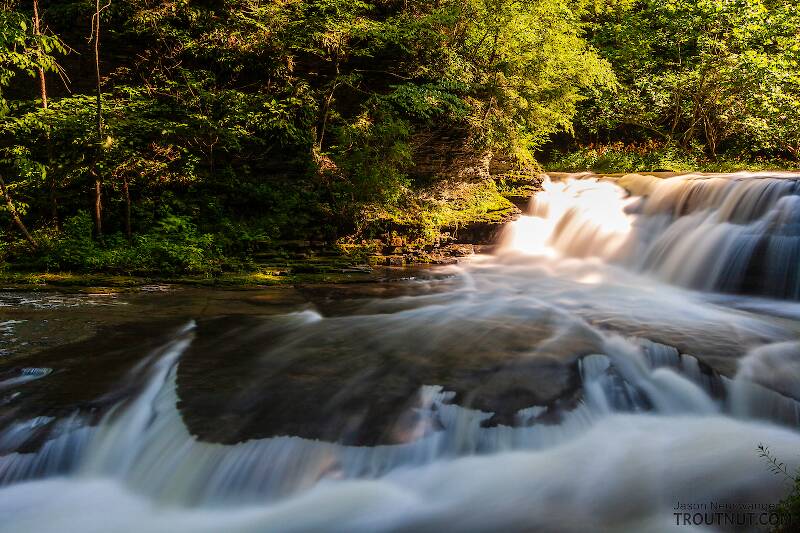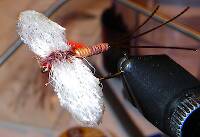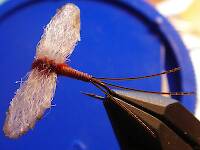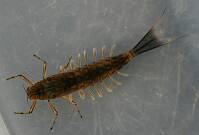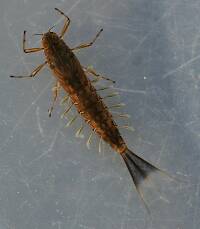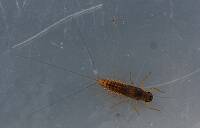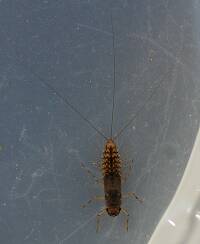
Salmonflies
Pteronarcys californica
The giant Salmonflies of the Western mountains are legendary for their proclivity to elicit consistent dry-fly action and ferocious strikes.
Featured on the forum
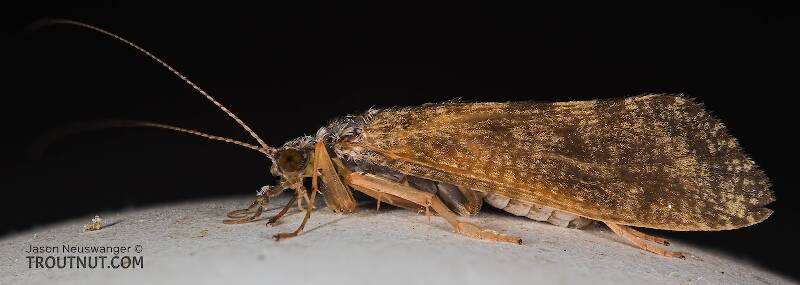

Troutnut is a project started in 2003 by salmonid ecologist Jason "Troutnut" Neuswanger to help anglers and
fly tyers unabashedly embrace the entomological side of the sport. Learn more about Troutnut or
support the project for an enhanced experience here.
Mcjames on Jan 2, 2008January 2nd, 2008, 5:09 am EST
I recently made some wingburners out of 0.10mm brass, in order to shape wingcases for some nymphs a la Gonzo... but the first time I used them, the brass heated up and melted the Tyvek in between the two pieces of brass. Any tips?
I am haunted by waters
Flybyknight on Jan 2, 2008January 2nd, 2008, 8:43 am EST
McJames,
Why the Tyvek? which is a polyolefin and melts around 325°F
Toss the plastic, use an alcohol burner, and you'll be fine.
Dick
Why the Tyvek? which is a polyolefin and melts around 325°F
Toss the plastic, use an alcohol burner, and you'll be fine.
Dick
Lightly on the dimpling eddy fling;
the hypocritic fly's unruffled wing.
Thomas Scott
the hypocritic fly's unruffled wing.
Thomas Scott
Dryfly on Jan 2, 2008January 2nd, 2008, 9:48 am EST
Make sure the burner when closed is totally pressed together. Close your burner and look at the tip, the two sides should be lying flat together, if not just bend with your fingers. If one side is canted a little upward then the flame can get inbetween and burn the part you don't want burned.
Martinlf on Jan 2, 2008January 2nd, 2008, 10:39 am EST
Also just apply the flame around the edges, fairly quickly, to tyvek that is roughly cut to the shape of the burner but sticking out a bit. That way the burner doesn't heat up that much. I've found you still need to do a bit of trimming, mostly in the middle v-notch to get the shapes Gonzo does, but the burner makes the whole process much quicker than cutting out the whole case, and the burn seals the edges for wear. Some advantages of tyvek are that it's tough, takes marker colors well, and can be adapted to many shapes and sizes.
"He spread them a yard and a half. 'And every one that got away is this big.'"
--Fred Chappell
--Fred Chappell
Mcjames on Jan 3, 2008January 3rd, 2008, 3:16 am EST
many thanks I will give it a try. I have been using tyvek for a while because its durable and free in large quantities.
I am haunted by waters
Quick Reply
Related Discussions
Topic
Replies
Last Reply
4
Apr 21, 2007
by PeterO
by PeterO
23
May 11, 2008
by DayTripper
by DayTripper
5
Aug 20, 2009
by Flytyer0423
by Flytyer0423

